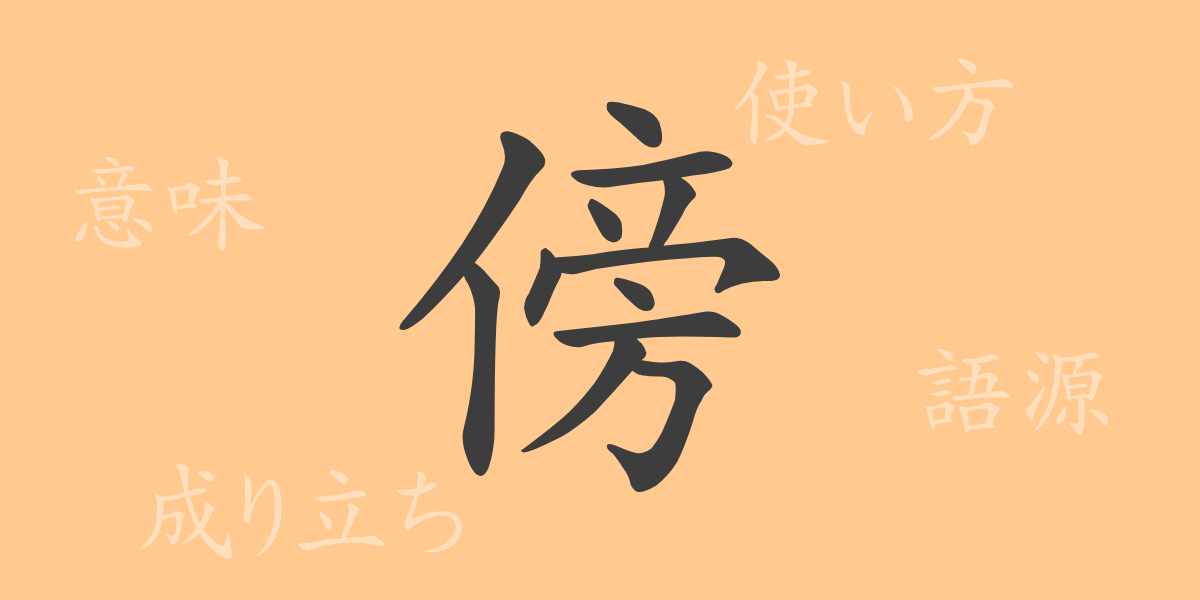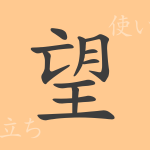The beauty of the Japanese language is reflected in its complex and rich characters. One of the 常用漢字 (jōyō kanji), “傍” (bō), influences various aspects of our lives through its form and meaning. In this article, we will delve into the origins, usage, and even idioms and expressions that use this character. By unraveling the history and culture embedded in each kanji, let’s explore the charm of “傍” (bō).
The Origin of 傍 (bō)
The kanji “傍” (bō) is a character formed in ancient China. Its origin traces back to a depiction of a person standing viewed from the side. Initially, it was used to mean “beside” or “near” something, and over time, it also came to mean “to be involved.” In Japan, it was introduced during the Heian period and expanded in meaning and usage within the unique culture of Japan.
The Meaning and Usage of 傍 (bō)
The kanji “傍” (bō) has a wide range of uses, from spatial meanings like “beside,” “neighbor,” and “vicinity” to abstract meanings such as “unrelated” or “uninvolved.” Specific examples include “傍観者” (bōkansha, an onlooker), and “傍点” (bōten, a mark used to highlight part of a text).
Reading, Stroke Count, and Radical of 傍 (bō)
The kanji “傍” (bō) is notable not only for its rich form and meaning but also for its reading, stroke count, and radical.
- Reading: In on’yomi (音読み), it is read as “ボウ” (bō), and in kun’yomi (訓読み), it is read as “かたわ.ら” (katawara), “わき” (waki), and “そば” (soba).
- Stroke Count: It has a total of 12 strokes.
- Radical: The radical is “人” (hito, ninben).
Idioms, Expressions, and Proverbs Using 傍 (bō) and Their Meanings
There are numerous idioms, expressions, and proverbs that include “傍” (bō), each symbolizing the richness of the Japanese language. For example, “傍若無人” (bōjakubujin, behaving selfishly without regard for others), “傍聴席” (bōchōseki, seats for observers in a courtroom or meeting), and “傍観者” (bōkansha, a person who just watches without getting involved). These idioms and expressions are frequently used in daily conversations and literary works, conveying the depth of the language.
Summary of 傍 (bō)
The 常用漢字 (jōyō kanji) “傍” (bō) exemplifies the depth of Japanese language and culture through its diverse shapes, meanings, readings, stroke counts, and idioms. Each kanji carries its own story, shaping our worldview and values. Through “傍” (bō), re-recognizing the power of words not only deepens our understanding of Japanese but also enriches our expressive journey.
“`

























